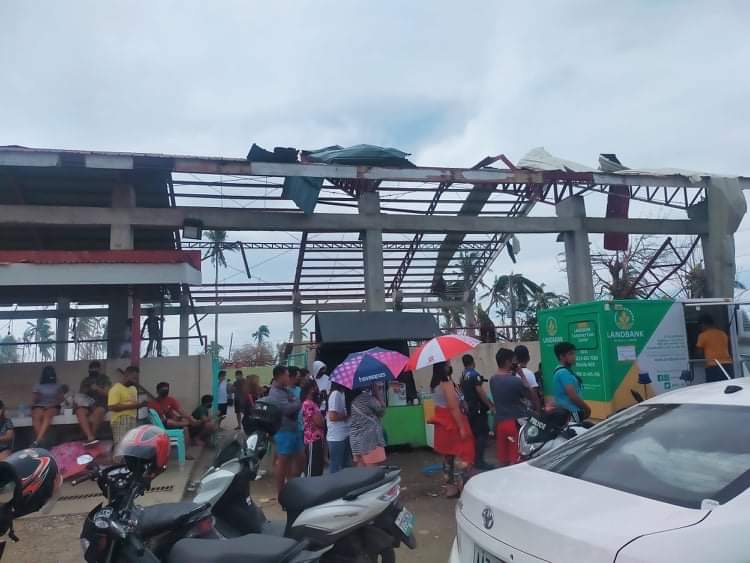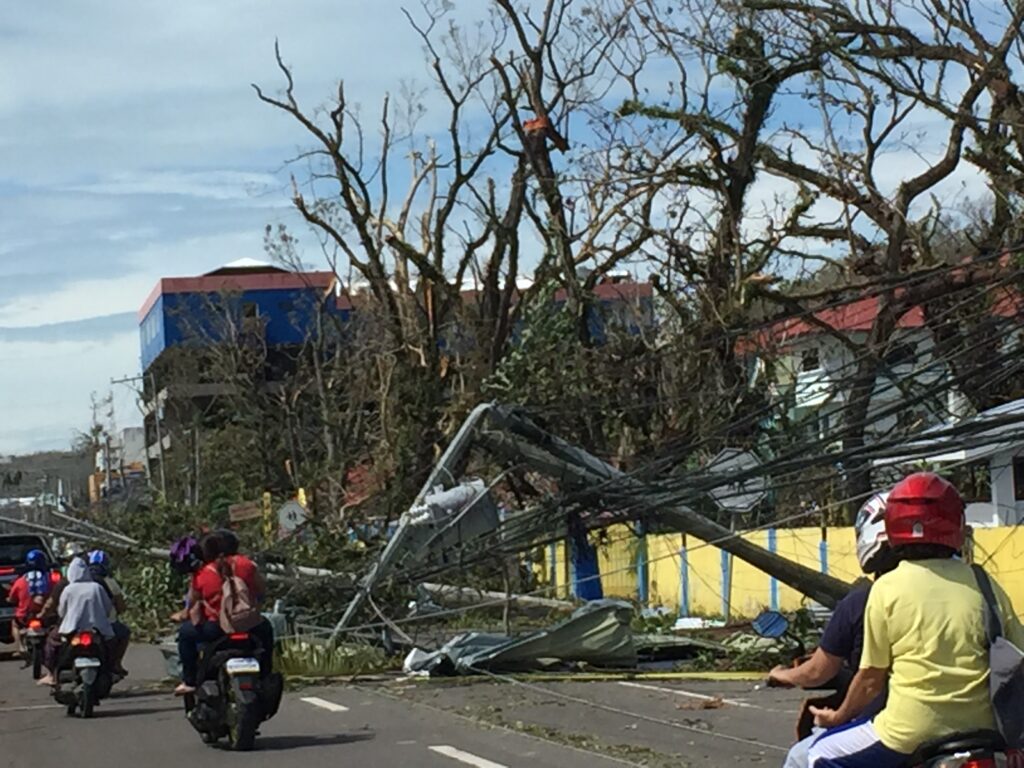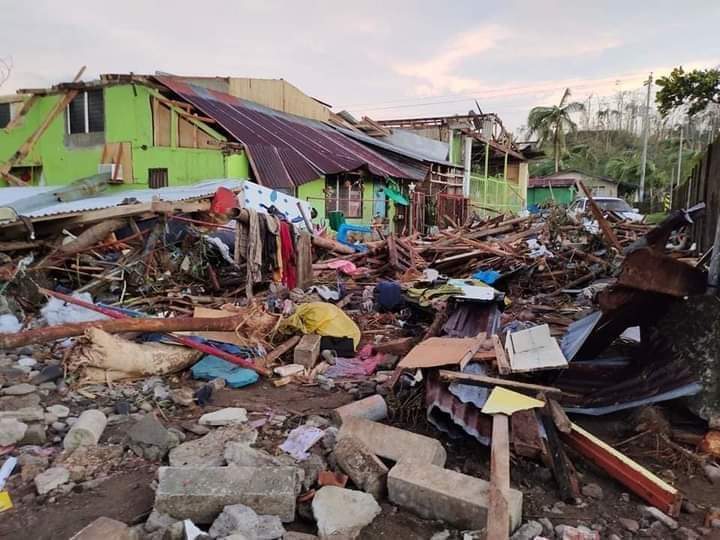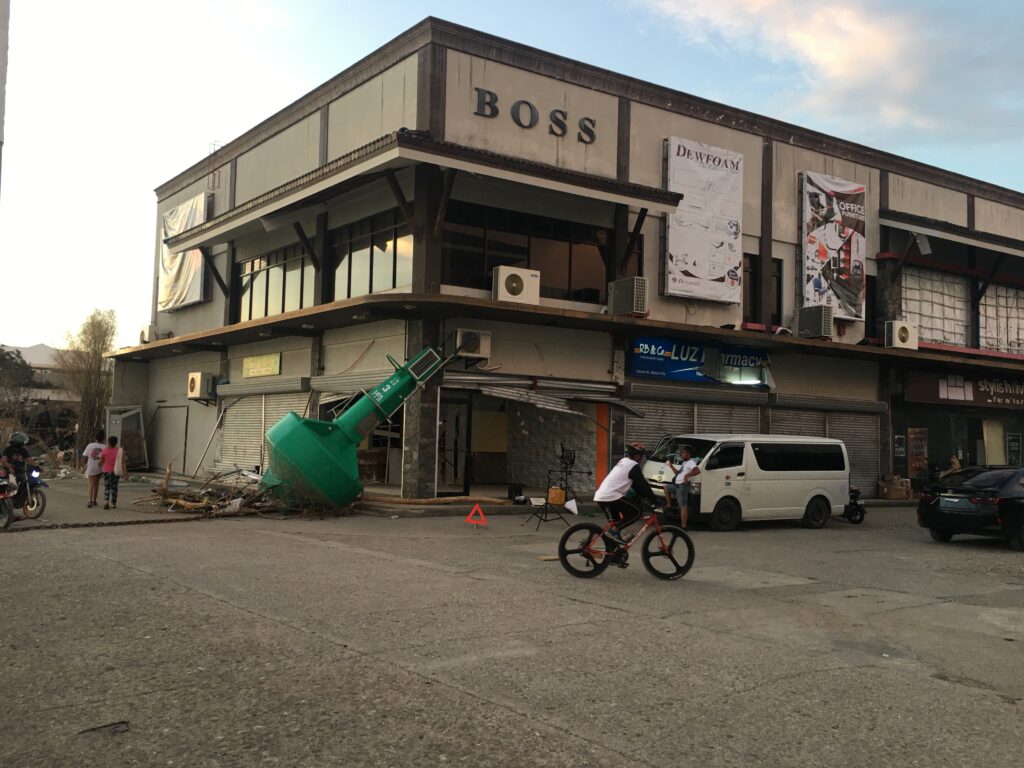
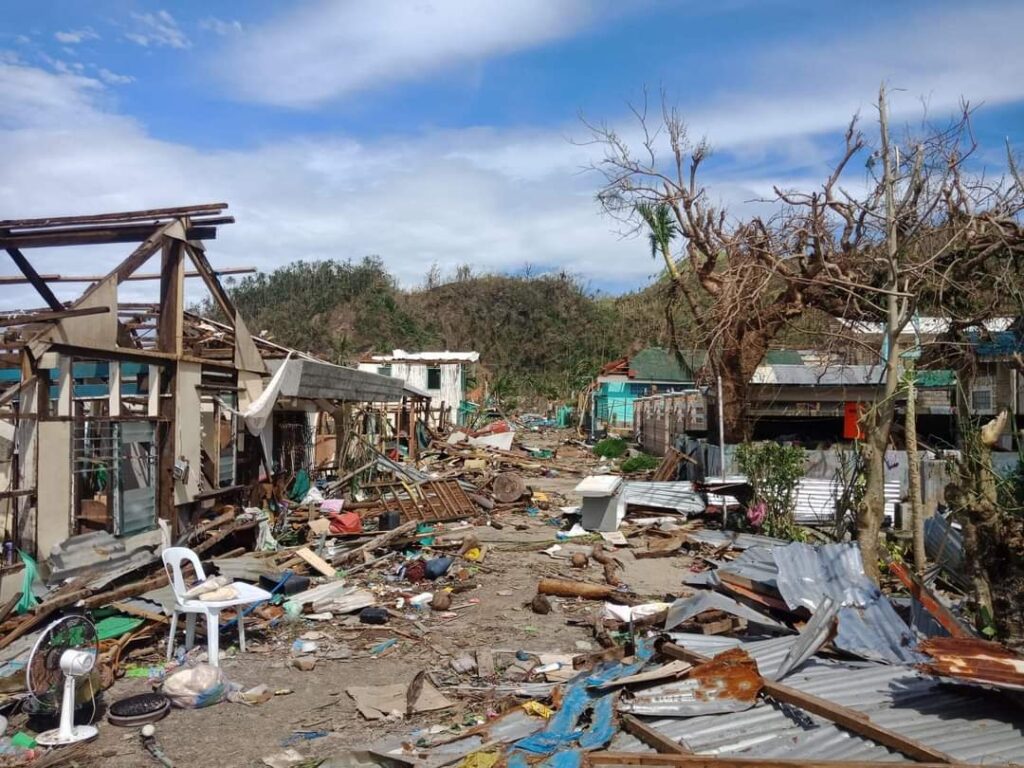
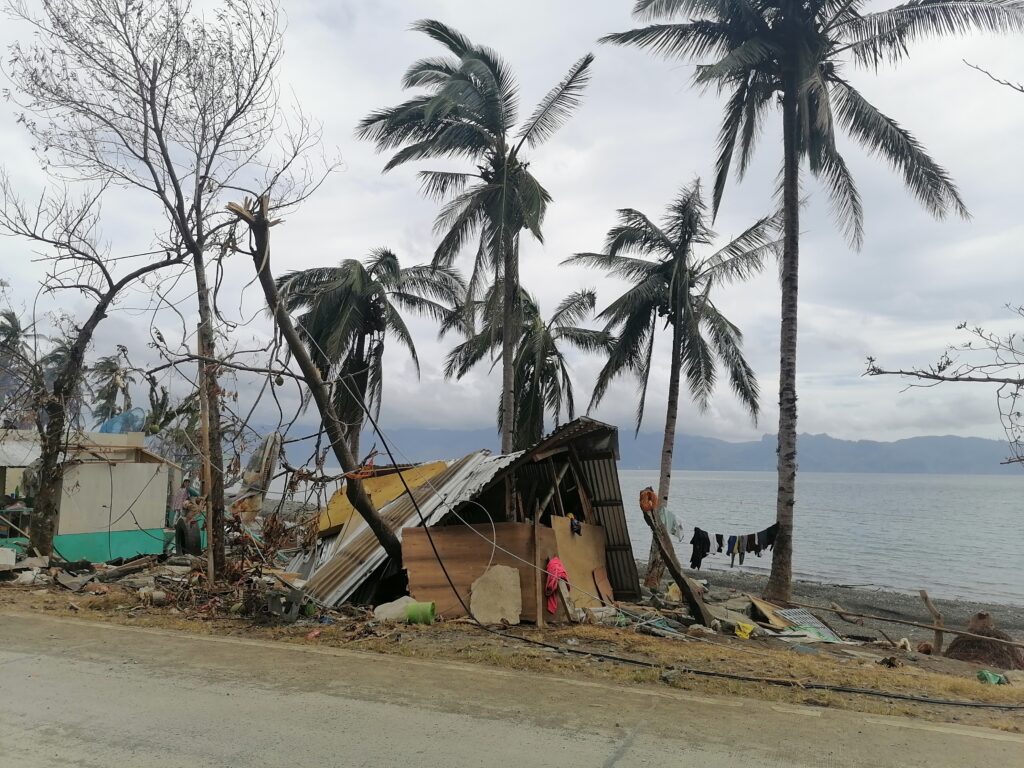
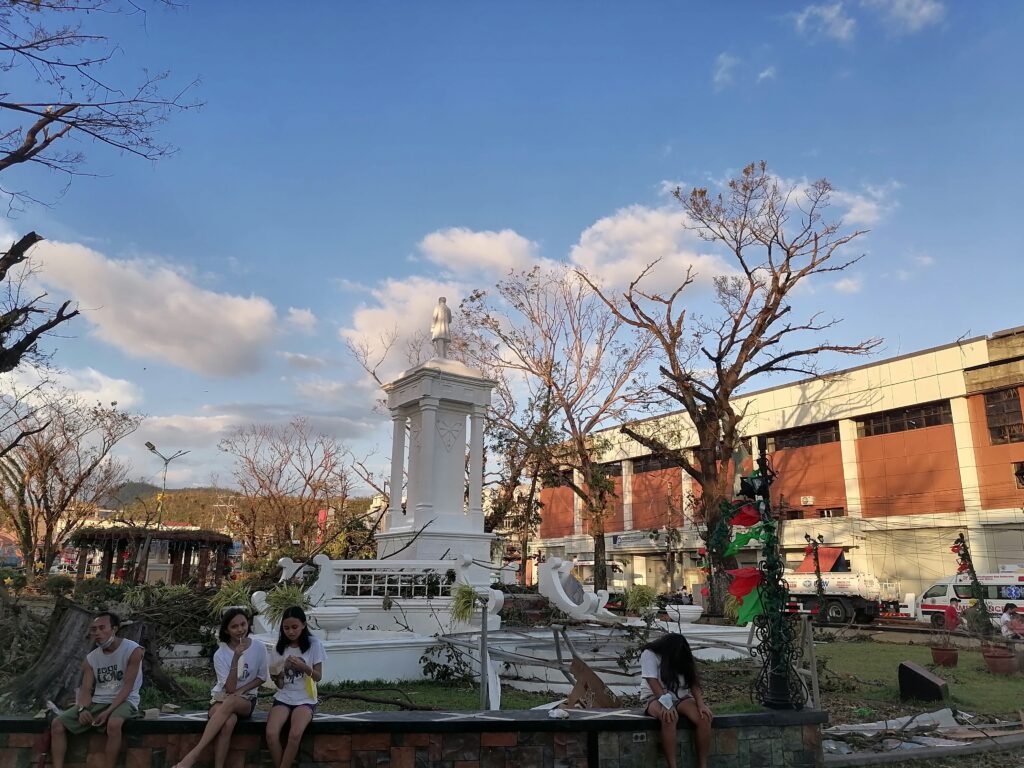




Death and Looting reported
SOUTHERN LEYTE – Three days before Typhoon Rai, Philippine name “Odette,” had its fury felt in Southern Leyte, the Task Force Provincial Disaster Risk Reduction and Management Council met specifically to discuss the upcoming typhoon. When the super typhoon finally came on December 16, 2021 the people did not expect the gravity of the winds that rammed on the seashores, farms and hills of the province that started at three in the afternoon until nine in the evening. The extent of destruction cannot be described, said a government official, who made a quick assessment as soon as the typhoon moved on to Central Visayas.
Thousands of families lost shelter as their homes were totally wrecked by typhoon Odette. There are around 80% of households seriously affected, said the Provincial Disaster Risk Reduction and Management Chief Danilo Atienza in a national media interview.
Cristina Tiu of the Department of Interior and Local Government reported that as of 5pm on December 21, there were 24 persons dead, 6 missing and 351 injured in Southern Leyte due to typhoon Odette. The reported deaths are from Liloan (2), Limasawa (1), Maasin (1), Macrohon (1), Malitbog (5), Padre Burgos (1), Saint Bernard (7), San Francisco (3), Sogod (2), and Tomas Oppus (1). The missing persons are from Saint Bernard (1), San Juan (4), and Tomas Oppus (1).
In Maasin City it was reported that a cellphone and general merchandise stores were looted, and sets of jewelry on display counters of a supermarket were stolen.
The religious tourism island of Limasawa was badly battered, leaving 90% of the houses destroyed, as reported.
The cost of the destruction in Southern Leyte in terms of infrastructure and agriculture is estimated at Php3 billion, Department of Public Works and Highways Secretary Lt. Col. Roger G. Mercado said in a national media interview last December 21, 2021. “Talagang wasak kami.” (We are simply devastated). “We need food, water and shelter.”
Communication was almost zero during the first two days. Charging of cellphones was done in few places which had generators. People lined up for hours to get drinking water and gasoline.
Disaster response came quickly from the local electric cooperatives in Eastern Visayas to repair the fallen electric poles and lines, like the Southern Leyte Electric Cooperative, Leyte Electric Cooperative, Ormoc Electric Cooperative, Biliran Electric Cooperative, Northern Samar Electric Cooperative and Samar Electric Cooperative. When asked about the date that power would be restored, their response was that it would take some time, but that the main road would be fixed sooner.
The Philippine Red Cross Southern Leyte Chapter attended to the stranded travelers and other affected people who needed services.
On the afternoon of December 17, 2021, President Rodrigo Roa Duterte and Senator Christopher “Bong” Go came by helicopter to assess the extent of the damage. They reportedly came from Siargao Island, Surigao City, over Dinagat Islands and then in Maasin City to extend aid and meet with local leaders on the rescue and recovery efforts.
President Duterte mentioned to release P1 billion in calamity funds to the affected local government units, plus P1 billion to the concerned government agencies for recovery operations.
State of calamity declared
Provincial Governor Damian Mercado placed Southern Leyte with its 18 municipalities and component city under a state of calamity four days later due to Typhoon Odette’s onslaught during a convergence meeting held last Monday, December 20, 2021.
Super Typhoon Odette made landfall on December 16, 2021 in Surigao del Norte, Pintuyan, Liloan and Padre Burgos with maximum sustained winds of 195km per hour and gustiness of 260km per hour. Intensifying from a tropical storm to a super typhoon within hours, Typhoon Odette brought heavy rains, violent winds, landslides and storm surges, making nine landfalls in seven provinces, according to initial data.
As of this writing, a summary report said that more than 200 towns and cities across the Philippines remain without electricity and at least 208 people have died from falling trees, collapsed walls, flash floods and landslides.
Data released by the Disaster Response Operations Monitoring and Information Center stated that on 20 December, over 1.8 million people (452,307 families) were affected across Regions V, VI, VII, VIII, X, XI, MIMAROPA, and Caraga. Meanwhile, the National Disaster Risk Reduction and Management Council reported that 631,402 people remained displaced, most of them in evacuation centres. (GMR)
